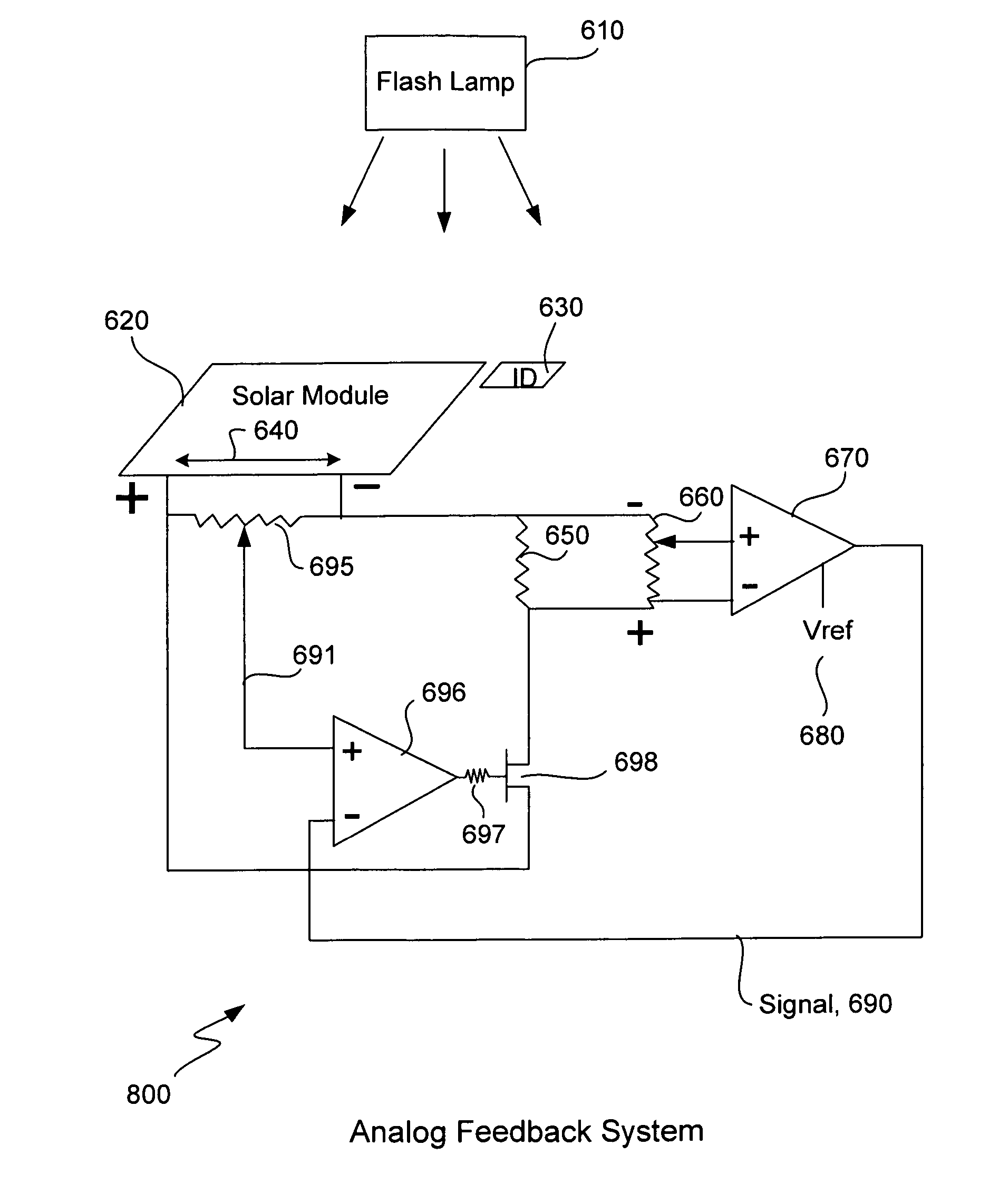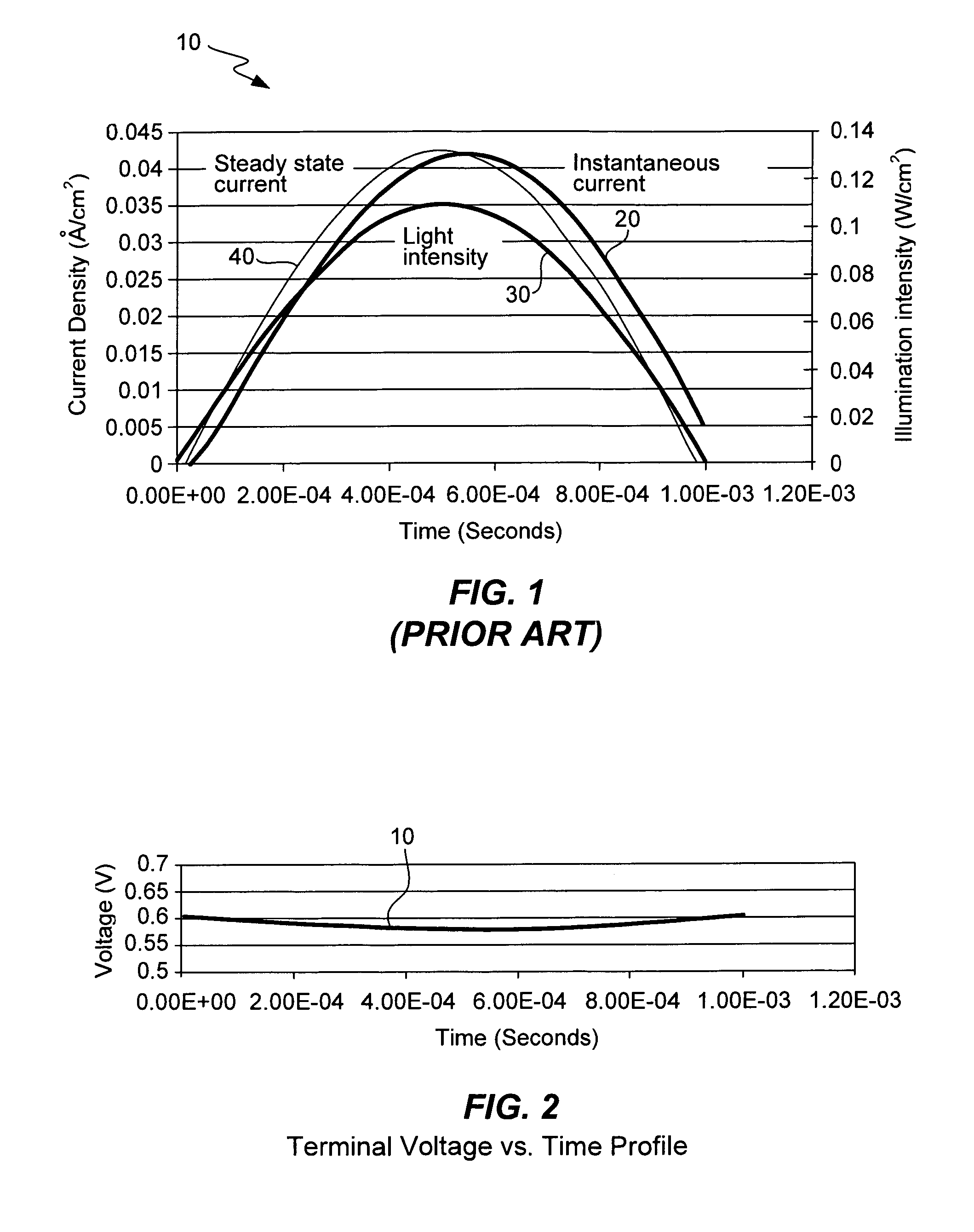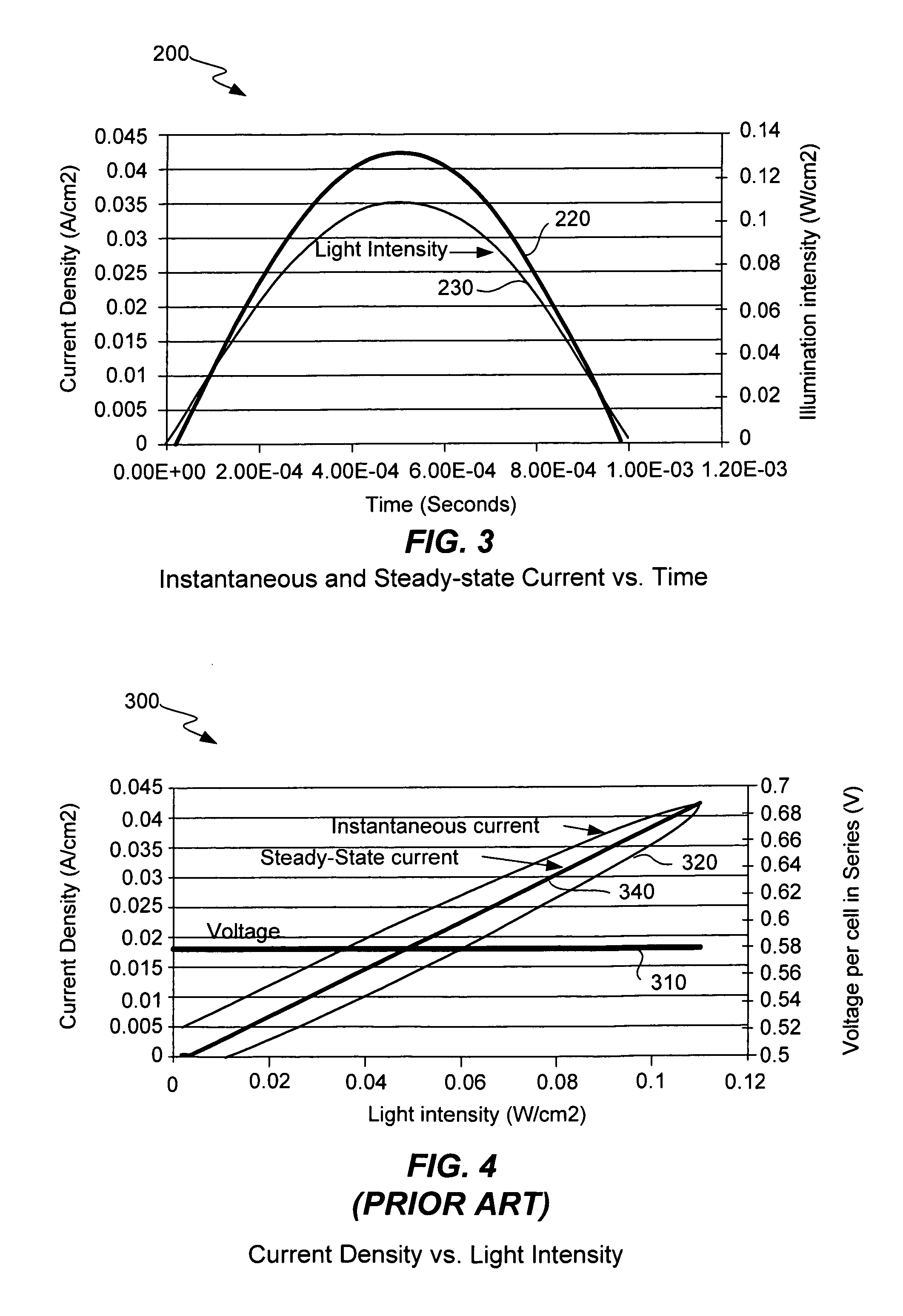Measurement of current-voltage characteristic curves of solar cells and solar modules
a technology of current-voltage characteristic curve and solar cell, which is applied in the direction of optical radiation measurement, instruments for comonautical navigation, instruments, etc., can solve the problems of significant errors in the measurement of some solar cells and modules, voltage, and 1% error in the measured power output of some high-efficiency cells, so as to accurately predict the performance of solar cells and modules. , to achieve the effect of accurate measurement of the characteristics of solar cells
- Summary
- Abstract
- Description
- Claims
- Application Information
AI Technical Summary
Benefits of technology
Problems solved by technology
Method used
Image
Examples
Embodiment Construction
[0038]The measurement of solar cells and modules using pulsed light has many advantages over the use of continuous light. But, because the time response of solar cells and modules can be quite slow, these measurements often have errors in the measured current and voltage compared to the measurement of the same cells or modules under constant-light conditions at the same illumination intensity.
[0039]In the measurement of solar cells and modules, the details of the module origin are often unknown. Experts in measuring modules generally treat these modules as black boxes, with terminal characteristics that must be measured correctly and repeatably. For example, in the studies by King the ramp rate was varied to be slower and slower until the result no longer depended upon the ramp rate. This technique determined appropriate measurement conditions that approximate the steady state. This results in an operating mode that requires a very long pulse with a uniform intensity in conjunction ...
PUM
| Property | Measurement | Unit |
|---|---|---|
| open-circuit voltage | aaaaa | aaaaa |
| constant voltage | aaaaa | aaaaa |
| power voltage | aaaaa | aaaaa |
Abstract
Description
Claims
Application Information
 Login to View More
Login to View More - R&D
- Intellectual Property
- Life Sciences
- Materials
- Tech Scout
- Unparalleled Data Quality
- Higher Quality Content
- 60% Fewer Hallucinations
Browse by: Latest US Patents, China's latest patents, Technical Efficacy Thesaurus, Application Domain, Technology Topic, Popular Technical Reports.
© 2025 PatSnap. All rights reserved.Legal|Privacy policy|Modern Slavery Act Transparency Statement|Sitemap|About US| Contact US: help@patsnap.com



